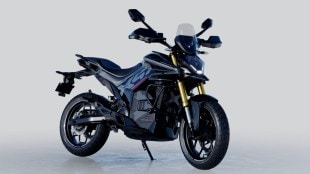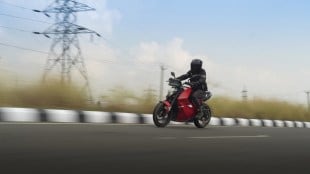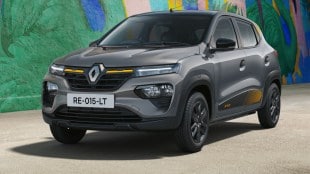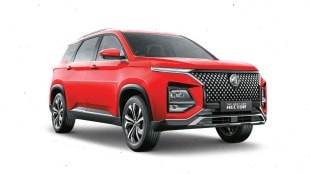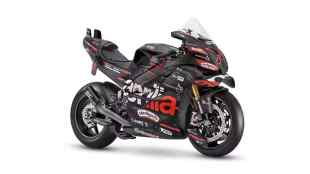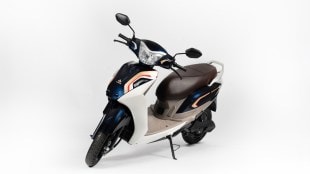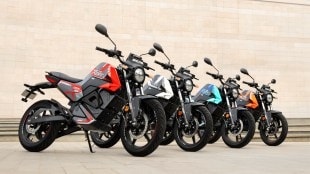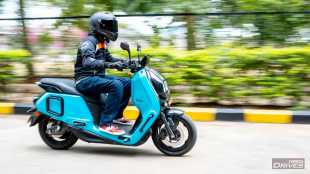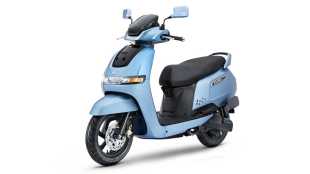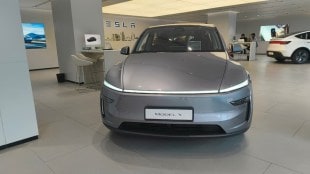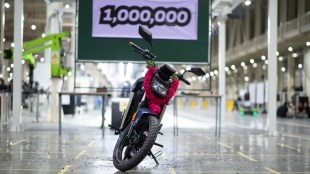The Lamborghini Huracán is quick. How quick? Quick enough that if you jumped off a cliff, you wouldn’t reach 60 miles per hour quite as soon as the Huracán can do it on a flat stretch of pavement. Car and Driver clocked this newest Lambo’s 0-to-60 run at 2.5 seconds, which means that you’re basically experiencing acceleration greater than gravity, but on a novel new vector—forward, towards the horizon.
Whatever other talents this car possesses, its personality is defined by its straight-line performance. It sucks the wind out of you, as if the V10 engine were vacuuming the exhalations from your chest and catalysing them into a swelling howl that would drown out an air-raid siren.
The Huracán (pronounced ur-ah-CAN) replaces the Gallardo, a car that enjoyed a 10-year run and more than 14,000 sales—the least expensive Lamborghini was, not surprisingly, the company’s most popular model ever.
The Gallardo was a screaming 200 mph wedge, but it was hampered by a clumsy 6-speed single-clutch automated manual transmission. You could make a cappuccino in the time it took to shift from first to second, and drink it in the time it took to get into third. There are many differences between the Huracán and its predecessor; the transmission is immediately noticeable.
The 2015 Huracán ditches the single-clutch set-up in favour of a 7-speed dual-clutch transmission. The twin clutches allow seamless gear changes, up and down, keeping the power of the 5.2-litre V10 flowing in an uninterrupted torrent. Automatic mode is now akin to an actual automatic transmission, in that you don’t notice it lurching from gear to gear like a new driver-ed student. In manual mode, the instant upshifts and perfect rev-matched downshifts make the whole package more cohesive. You’re no longer thinking about the transmission as a separate part of the car.
Except, that is, when you’re in manual mode and you prod the accelerator deep toward the floor, prompting an automatic downshift to the lowest possible gear. It’s always a surprise when this happens, the digital tachometer suddenly flickering over to 8,000 rpm as the banshees scream into the cabin and all other traffic seems to freeze. You’re in manual mode, fully in control, except for that one minor exception where the car takes over and catapults you into the next state.
With both direct and indirect fuel injection, the V10 makes 602 horsepower at 8,250 rpm. This is a naturally aspirated engine—there are no turbochargers hitting you with a pneumatic ram of torque, just a swelling rush as the revs climb. You’ve got to wind this thing up to exploit its power, and boy is it a joy to do that.
Lamborghini claims a top speed of 202 mph. Maybe you could get European delivery and take yours to Germany to dominate the left lane on an autobahn. Or sign up for an event like World Class Driving’s 200 mph Challenge (since discontinued), where I hit 200 in a Gallardo on a two-mile supersonic runway in the Florida Everglades. (A supersonic runway is one of the few places where you can legally explore this car’s capabilities.)
There’s a three-mode rocker switch on the steering wheel that lets you choose the aggressiveness of the throttle, stability control and other electronic parameters, including the threshold at which the muffler bypass flaps open. “Strada” is your base setting, followed by “Sport” and “Corsa.” In terms of the exhaust sound, this switch could be labelled “Legal,” “Who’s to Say?” and “Definitely Not.”
The steering wheel also hosts the windshield wiper controls and turn signal switch, following Ferrari’s logic that stalks on the steering column only get in the way of the shift paddles. The downside is sometimes you inadvertently activate the wipers in the middle of a right turn, which undermines your coolness.
I also returned with a bulging right calf muscle, because this $279,345 car didn’t have cruise control. There is a blank dummy switch on the steering wheel where it will go, once it becomes available. I suggest that since Volkswagen owns Lamborghini, perhaps every Huracán could come with a complimentary Volkswagen Golf S, a $20,000 car that includes cruise control as a standard feature.
Using the Golf for long slogs could also help you mitigate the Lambo’s frightening fuel-economy numbers—an EPA-rated 14 miles per gallon in the city and 20 on the highway. Those truck-like mileage estimates incur a $1,700 gas-guzzler penalty.
That is but a pittance for a car that starts at $242,445, though the price seems less excessive when you consider that its quarter-mile time (10.4 seconds) has it hounding the seven-figure Bugatti Veyron.
The $6,900 front-end lifting system seems mandatory for a car that will otherwise scrape its truffle-hunting snout on every speed bump and driveway incline from here to Ocean Drive. And the $3,900 reverse camera is a must-have. Unlike the Aventador, this car doesn’t have “Lambo doors” that scissor up and forward, so you can’t back up while sitting nonchalantly on the doorsill looking like a Roman valet.
While the Huracán is made of lightweight materials—its chassis is a hybrid of aluminium and carbon-reinforced plastic; the brake rotors are carbon ceramic—it doesn’t feel lithe. It’s a stiff car, serious and brutal in the way it goes about its business.
The all-wheel-drive system can send as much as 50% of the power to the front wheels, but it can also send 100% to the back. The variability in torque distribution means the car’s handling is never going to be as purely predictable as a rear-drive car’s. But all-wheel drive is what allows any driver to exploit the Huracán’s greatest talent, that time-bending acceleration.
I mean, the starter button has a red metal cover that you flip up as if you’re arming a warhead. In most cars, that would be a ridiculous pretention. In this one, it feels appropriate: Huracán armed, ready to outrun gravity.


